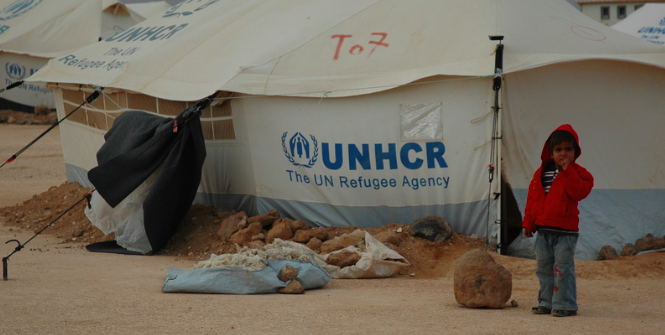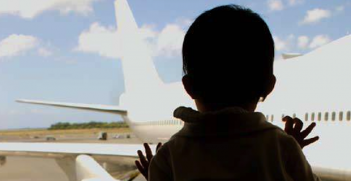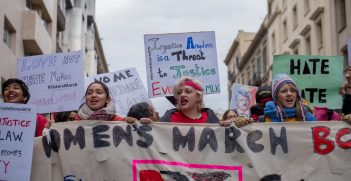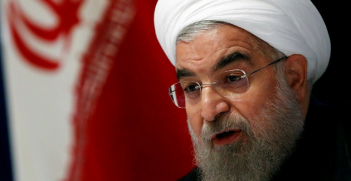Worldwide Displacement at Record Highs

2015 was a record year for forcibly displaced humans. Today there are almost 60 million people seeking a new home, almost three times the population of Australia.
The UN Refugee Centre’s (UNHCR) annual Global Trends report, released on 18 June 2015, deemed 2014 as a record year for the most number of forcibly displaced humans. Given the serious implications of the report, it is an appropriate time to reflect on the current situation of refugees throughout the world and reconsider strategies to combat the vicious refugee cycle—a cycle of violence or a form of persecution, flight, and repatriation.
Many international relations experts assert that the world is as peaceful as it has ever been, and point to the reduced number of conflicts post WWII. Globalisation has given rise to interdependence between countries that share mutual economic dependency, making it impractical for countries to wage war against one another. The decline of military force as a policy tool, and an increase in economic ties has improved cooperation among countries. Along with the presence of nuclear weapons as deterrence to war, and the fact that the world has not witnessed any major conflicts since WWII, there is validity in the argument that we have a functioning world system.
While there have not been any major conflicts, according to the recent UNHCR report, there were an alarming 59.5 million forcibly displaced people worldwide in 2014, the most in the post WWII era. The 59.5 million included 19.5 million refugees, 38.2 million internally displaced persons (IDPs) and 1.7 million asylum seekers. To put this figure into perspective, nearly three times the population of Australia has been seeking a new home.
The refugee cycle is not simply an issue of concern on the grounds of morality. It indirectly affects countries’ national security and economies. The average refugee crisis lasts more than a decade – few refugees find a long-term solution. Governments and non-state actors such as Refugees International need to work to find solutions to refugees’ urgent needs in order to build the hope of a brighter future, otherwise young refugees are prone to the lure of extremist groups such as ISIL. If this is not reason to act, the Global Peace Index states that regional and domestic conflicts cost the global economy a staggering $US 14.3 trillion in 2013 and 2014. If these issues are not tackled, the number of forcibly displaced individuals and economic consequences will continue to grow.
Currently, the largest source of 19.5 million refugees worldwide is Syria—a country frequently in our headlines and of significant concern. However, the refugee crisis is of global concern, because people are affected on every continent. The UNHCR report highlighted the increasing number of refugees and IDPs across all regions in the world in 2014. In the last 5 years, at least 15 conflicts have emerged. In addition to the three conflicts in the Middle East, there are eight in Africa, one in Europe and three in Asia. This statistic excludes the IDPs in the Americas, with 6 million IDPs in Columbia alone due to civil war. The refugee crisis is not simply an issue in the Middle East or pertinent to a particular region in the world, – the crisis is a global issue.
The UNHCR report proposes three durable solutions for refugees: voluntary repatriation, resettlement and local integration. Voluntary repatriation describes the process of returning refugees to their homes based on their own free will when conditions are safe. Resettlement is the organised movement of refugees from refugee camps, urban areas or other temporary situations to a country where they can live permanently. Local integration refers to refugees who cannot access refugee camps or live safely at home, and are forced to make a permanent home in another country. Each process is vital in safeguarding the well being of refugees – essentially the mission of the UNHCR that aims to resolve refugee problems worldwide.
With all three solutions, non-state actors and countries play a significant role in responding to refugee crises through aid, and countries welcoming refugees and asylum seekers into their borders. Aid is critical in alleviating the troubles of displaced individuals, and is a method of support that the international world is quite capable of. Alternatively, countries can also assist refugees in the resettlement process by opening up their borders, providing families and individuals a new home away from the issues they faced previously. Although supplying aid and opening one’s borders is necessary and support the solutions outlined by the UNHCR, these methods fail to directly combat the issue of displaced humans.
The refugee cycle has its roots the political instability of countries experiencing domestic conflict. Aid and opening up borders to refugees will only do so much. United Nations High Commissioner for Refugees António Guterres recently stated that the international community has an “utter inability” and advised further countries’ collaboration to halt wars and preserve peace, emphasising the need for political solutions. To reach the source of the refugee crisis, international systems must work with countries to achieve political stability where their citizens are not persecuted. Political instability is largely caused by revolutions that are sparked by oppressive, corrupt and/or weak government regimes. Therefore, the global refugee crisis is an issue that must be tackled from the top to establish sustainable governmental systems that will break the vicious refugee cycle. Tackling the issue from any other point will inevitably reignite conflicts.
This leads to the question: how can the global community help these unstable countries establish sustainable governmental systems without interfering with their sovereignty? Does the UN even possess the capabilities to mobilise action in these countries? After all, it is not within the UNHCR’s mission statement to solve the entire refugee crisis, but to protect refugees. Should its mission statement be revised or, should a separate organisation be created to tackle the refugee problem at its roots? If the global community does not possess the capability and power to mobilise such action, it seems the international order must change first, before there is hope of breaking the refugee cycle.
Kevin Kelly is an intern at the AIIA National Office. He is completing a Bachelor of Arts Degree in International Relations and Chinese at Tufts University. This article can be republished with attribution under a Creative Commons Licence.





